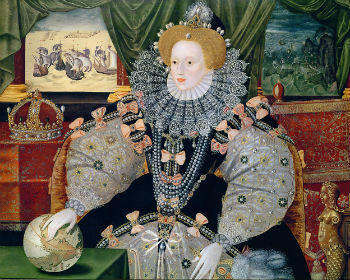“The law is the expression of the general will. [...] It must be the same for everyone, whether protecting or punishing. All citizens, being equal in their eyes, are equally entitled to all dignities, places and public jobs, according to their capacities and without any distinction other than that of their virtue and their talents. [...]”1
This is article 6 of the Declaration of the Rights of Man and Citizen, proclaimed in France, in 1791. In the article, it is possible to see the attempt to establish equality between all citizens French, a situation contrary to what prevailed in feudalism, with the privileges of the nobility and the clergy. The Declaration of Human Rights was the main feature of the phase of the French Revolution known as the Constitutional Monarchy, which took place between 1789 and 1792. In the text below, you will know the main facts that marked this phase.
Youbackgroundfrom this phase they showed the failure of the Assembly of the States General and the construction of a Constituent Assembly on June 9, 1789. The king reacted to this decision of the deputies and dismissed the reformist minister Nescker, who had some popular support.
Aware of the resignation and in the face of a rumor that the royal troops were marching from Versailles to Paris, part of the Parisian population decided to assault the Arsenal des Invalides. Numerous weapons, such as rifles and cannons, were taken. But the gunpowder was missing. And she was in the Bastille, a fortress that served as a storehouse and prison for the king's political opponents.
On July 14, 1789, the population invaded the fortress and freed the prisoners. The episode, known as the fall of the Bastille, started the revolution that would spread throughout France, seeking to overthrow despotism. Furthermore, the French Revolution was hailed in various parts of the world as the principle of liberation from feudal oppression.
In the French countryside there was the Great Fear, a period in which the peasant masses began to take the lands of the nobility and clergy, in a struggle against feudal privileges. Castles were burned and members of the nobility massacred.
In 1791, the Constituent Assembly approved the Declaration of the Rights of Men, inspired by the US Declaration of Independence, which provided for the abolition of feudal privileges. After proclamation, the Constituent Assembly became the National Assembly. The political groups were divided between the Girondins, representatives of the big bourgeoisie, the Jacobins, linked radical republicans. the popular masses, in addition to the cordeliers, also linked to the popular classes, and the feuillants, representatives of the bourgeoisie financial.
The assets of the Catholic Church were confiscated and served as the basis for the creation of assignats, a new coin that started to circulate. Members of the clergy were also required to be subordinate to the state, through the Civil Constitution of the Clergy. Pope Pius VI opposed the measure, condemning the Revolution and dividing the clergy between those who accepted the code, called the sworn clergy, and those who did not, the refractory clergy. The nobility and clergy were attacked, but not the royal power.
The king remained the head of the executive branch. Its powers, however, were limited by the existence of two more powers: the Legislative Power and the Judiciary Power. But the Constitution that provided for the equality of all was not so egalitarian. Only those with income higher than a set amount were entitled to vote. The citizens were thus divided among the active, the rich who could vote, and the liabilities, the poor excluded from voting.
The measures adopted did not please the population of the exploited classes in France, as the Constitution benefited the bourgeoisie. The objective of the popular strata, mainly urban ones, was to advance the Revolution. The nobility was frightened and several of its members fled abroad. Even the royal family tried to go to Austria in June 1791. They were arrested in the city of Varennes and returned to Paris. With that, the ideals of republicanism grew.
The National Assembly then had to deal with the threat of invasion of France by Austria and Prussia. In April 1792, war was declared on the two countries. The Insurrectionary Commune of Paris was formed in the capital, commanded by the Jacobins, which controlled the city during the war, distributing arms to the population to defend the homeland in danger.
The Commune also demanded the removal of the king from the National Assembly, but it was not complied with. In front of the Parisian population, he invaded the royal palace on August 10, arresting King Louis XVI. The legislature was suspended and the National Convention was created to direct the affairs of the State.
The war ended on September 20, after the defeat of the Austrians and Prussians at the Battle of Valmy. The king was declared an enemy of the Revolution. With that, the Constitutional Monarchy ended and the Republic.
–––––––––––
* Image Credit: Carnavalet Museum
[1] The 1791 Declaration of Human and Citizen's Rights can be found at this address: http://www.direitoshumanos.usp.br/index.php/Documentos-anteriores-%C3%A0-cria%C3%A7%C3%A3o-da-Sociedade-das-Na%C3%A7%C3%B5es-at%C3%A9-1919/declaracao-de-direitos-do-homem-e-do-cidadao-1789.html. Accessed on 08/30/2013.
Take the opportunity to check out our video classes related to the subject:


